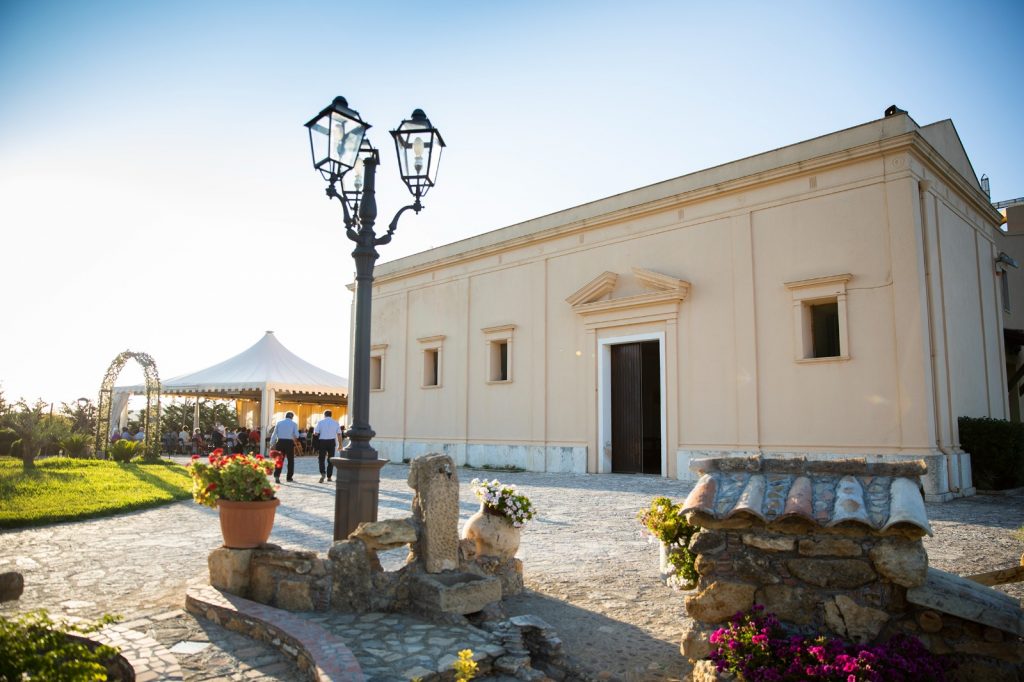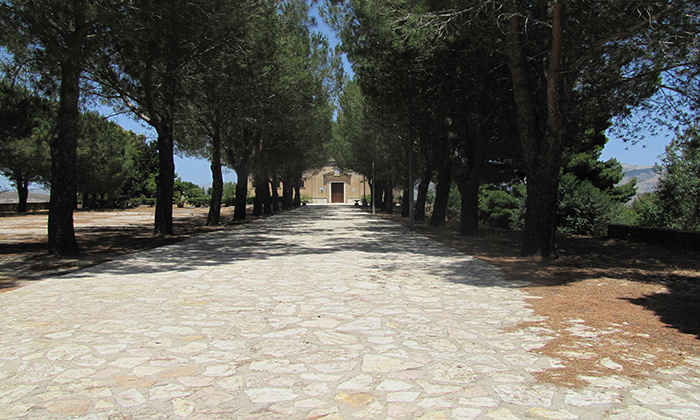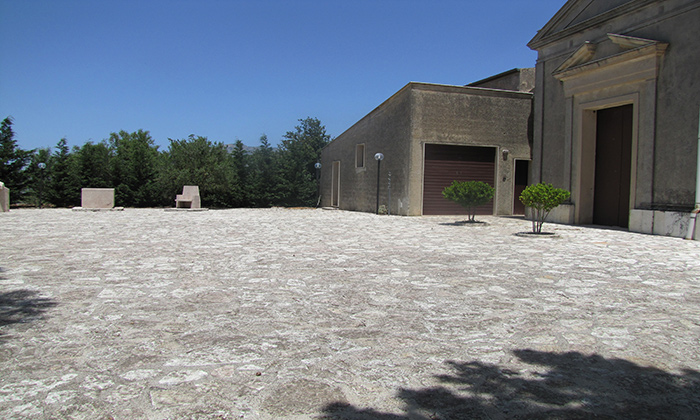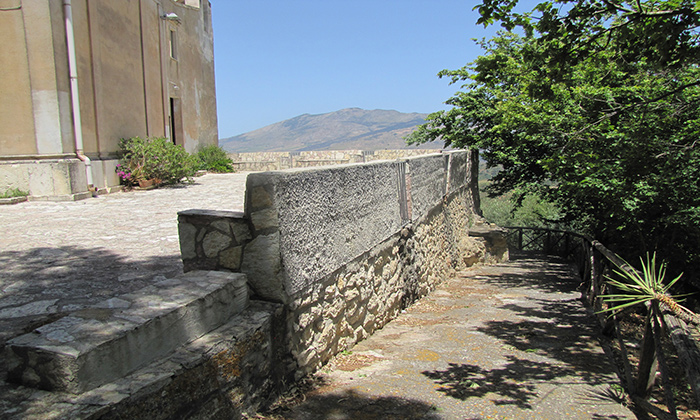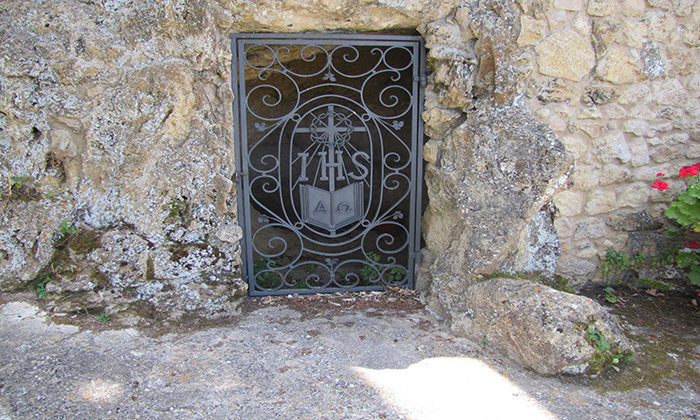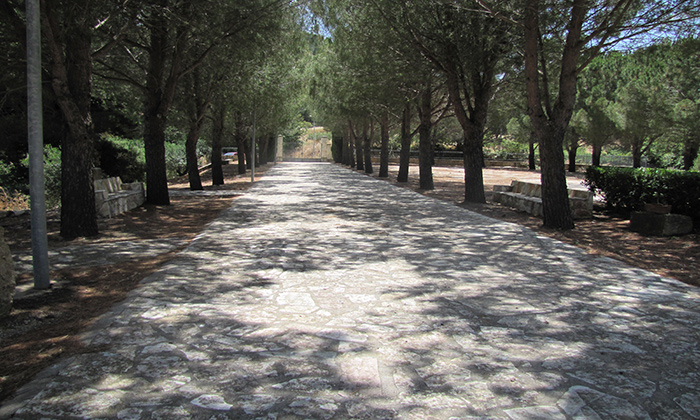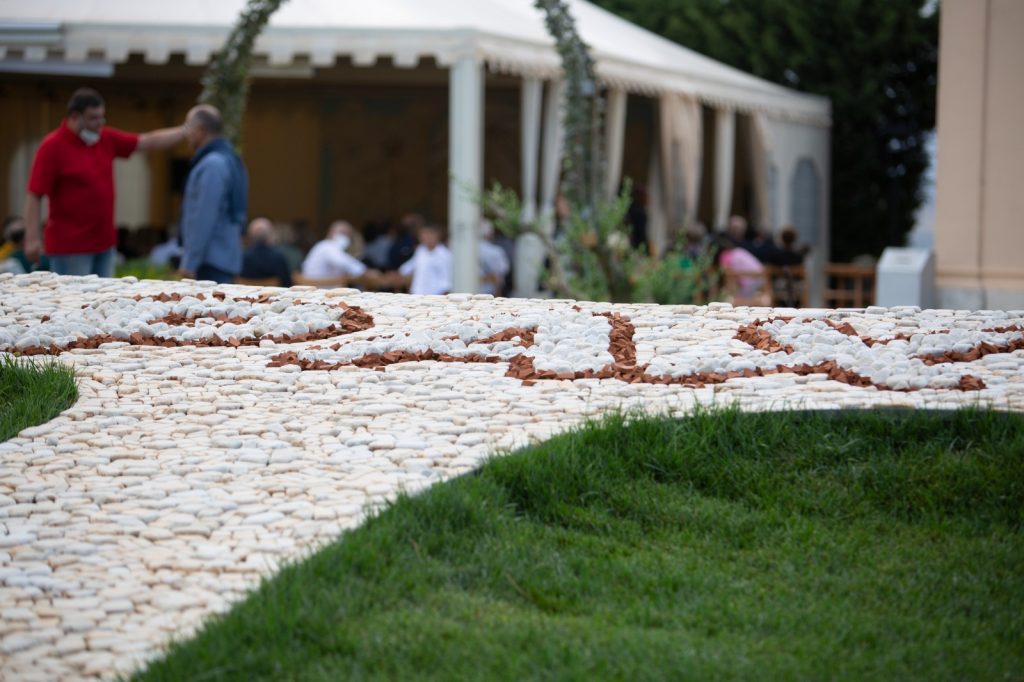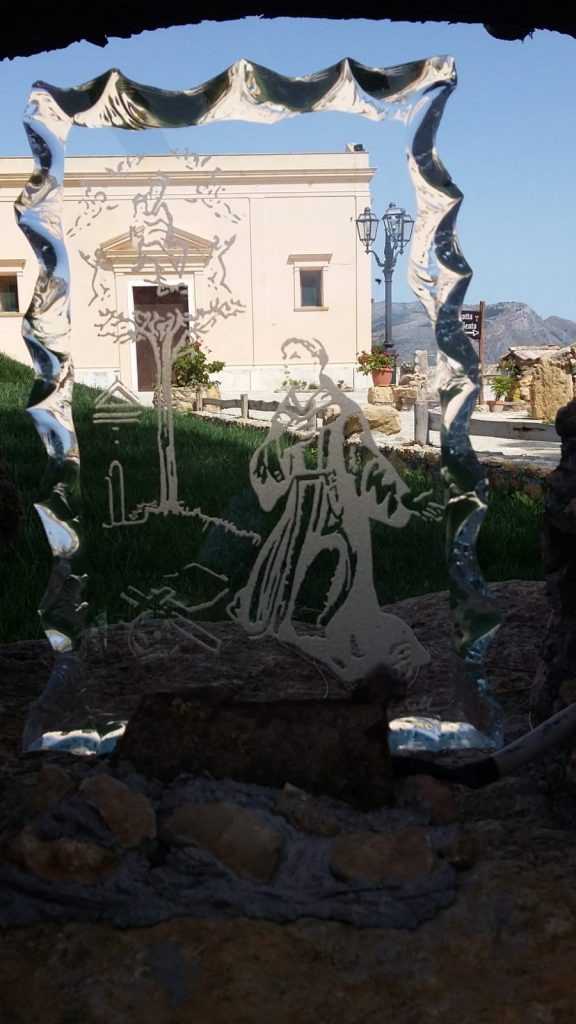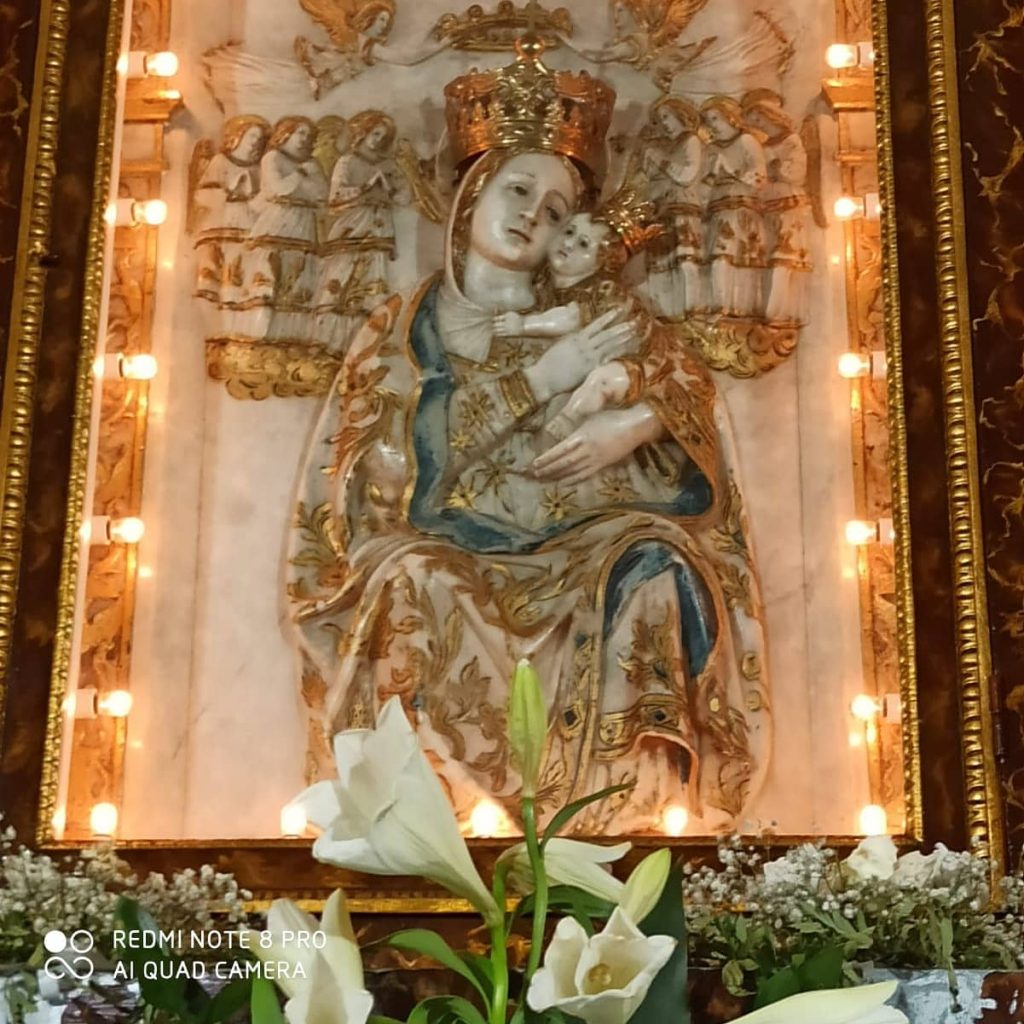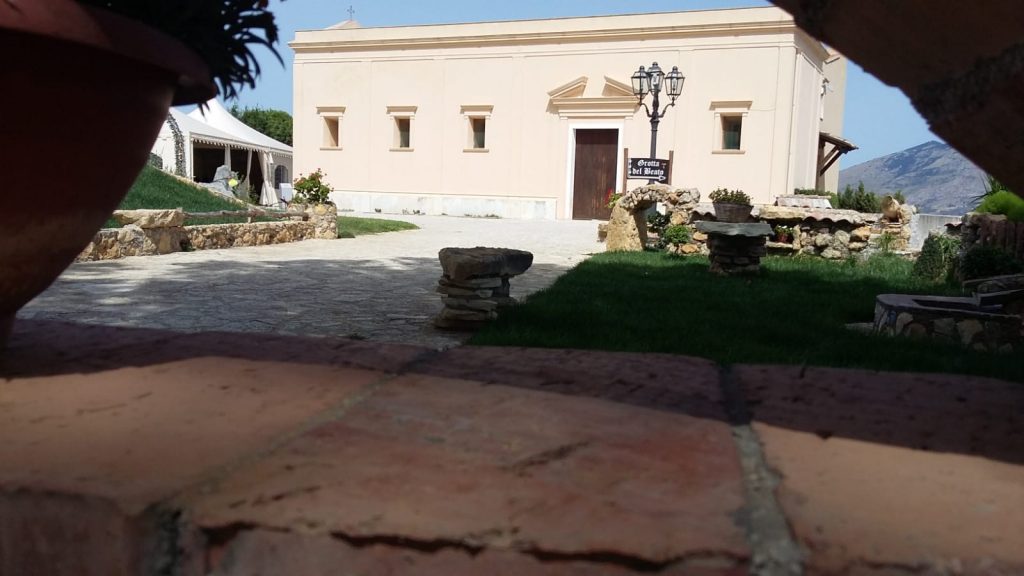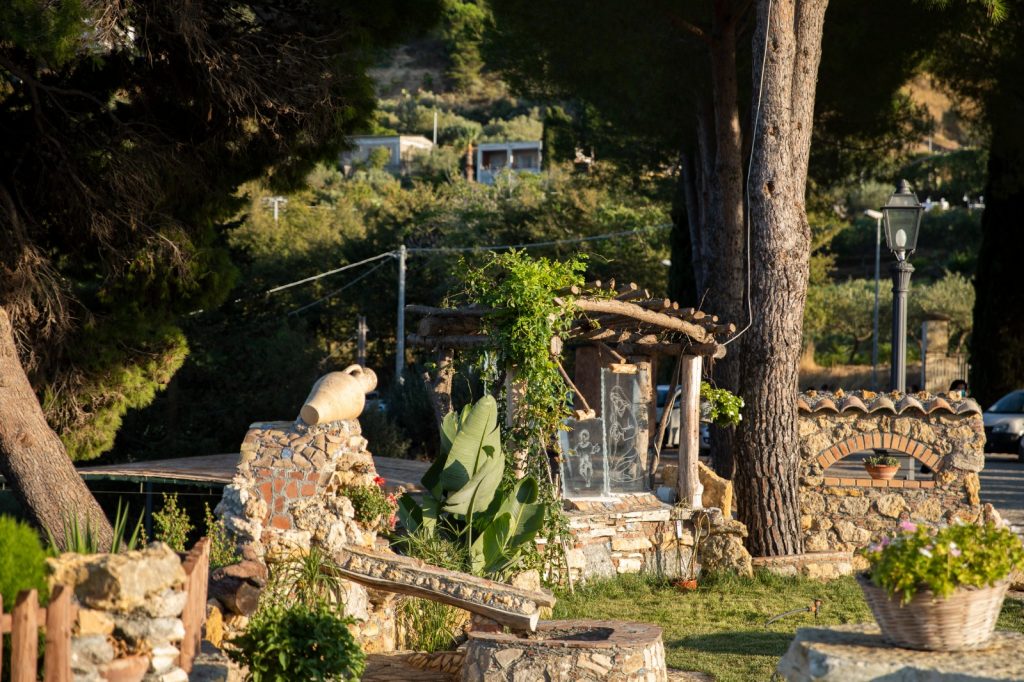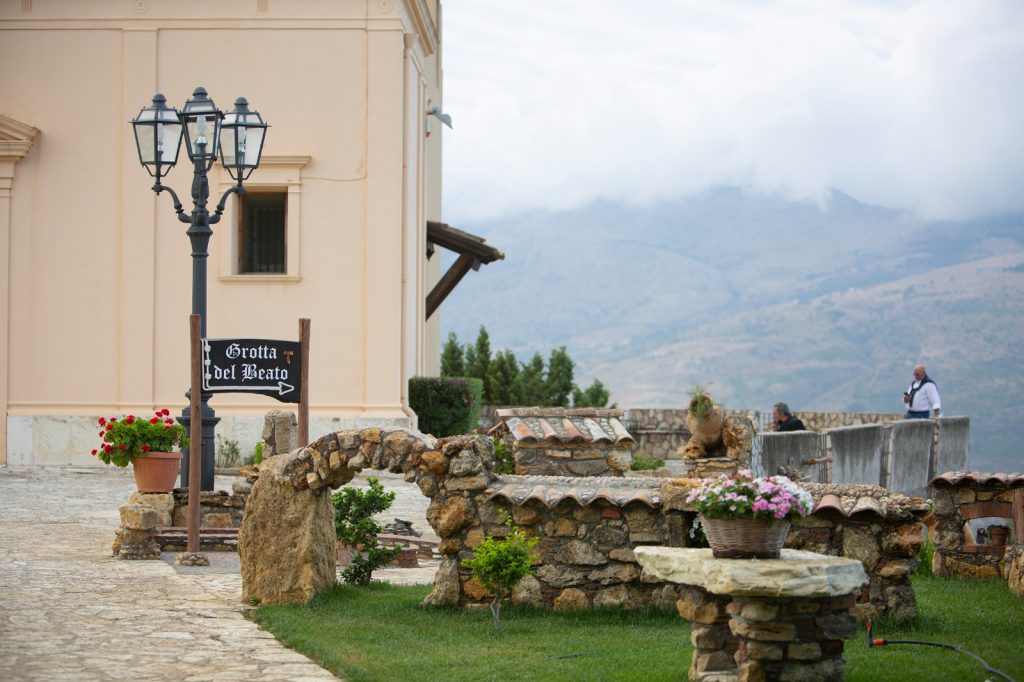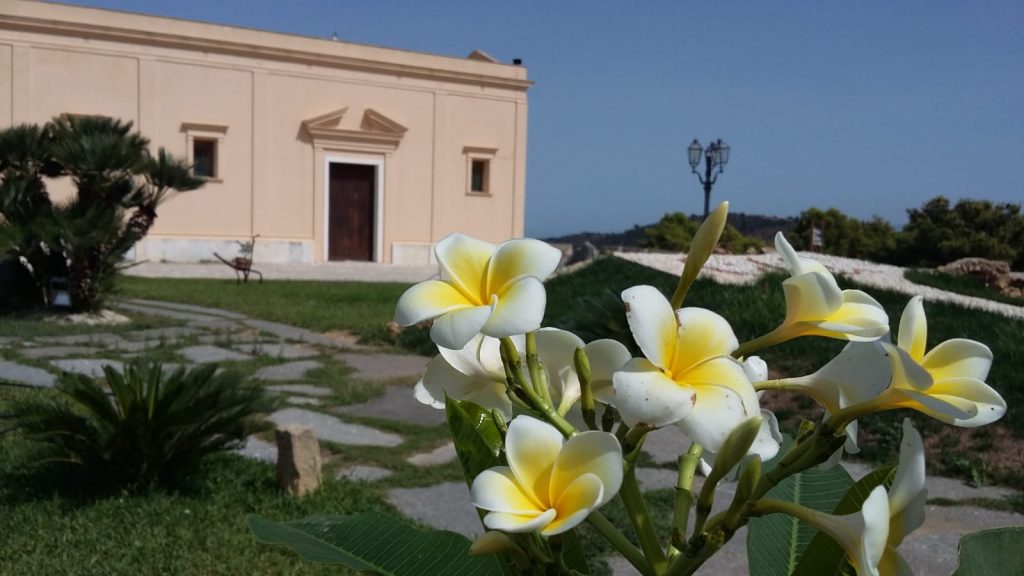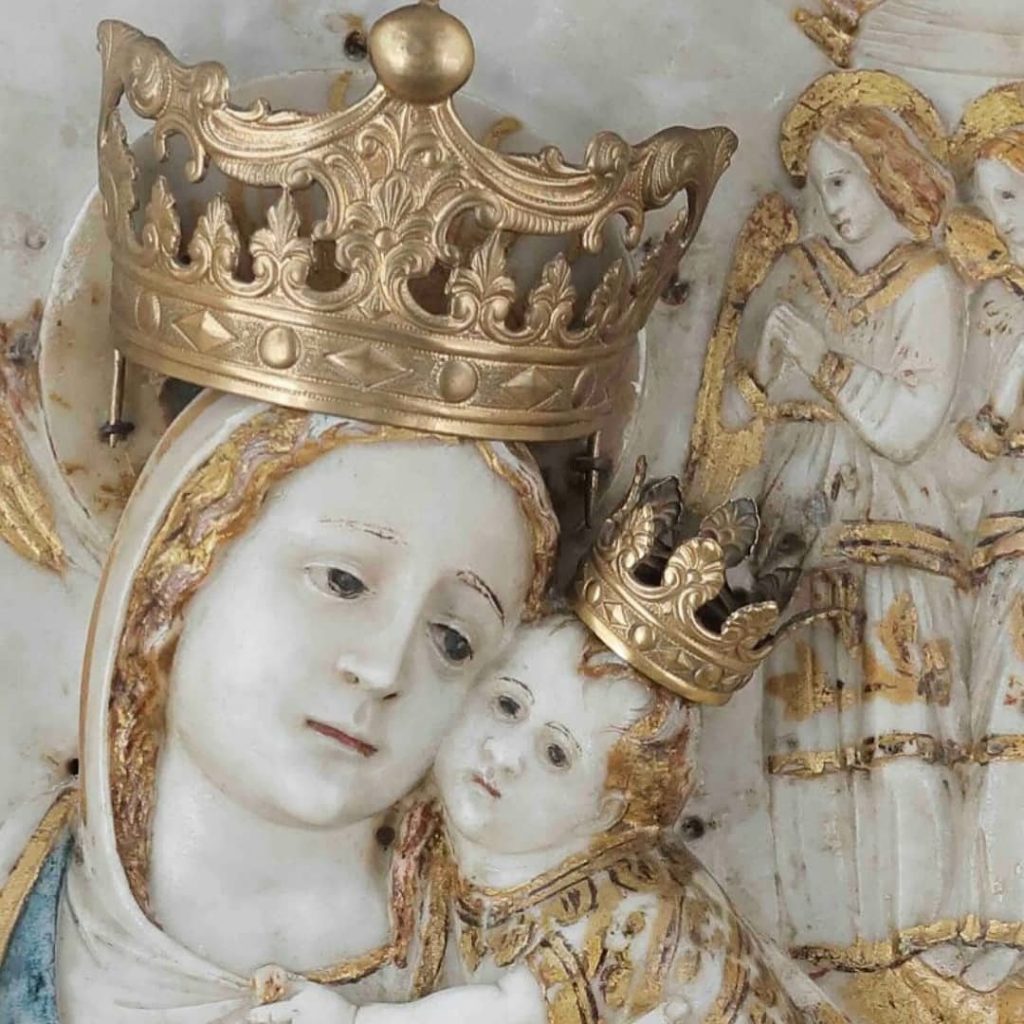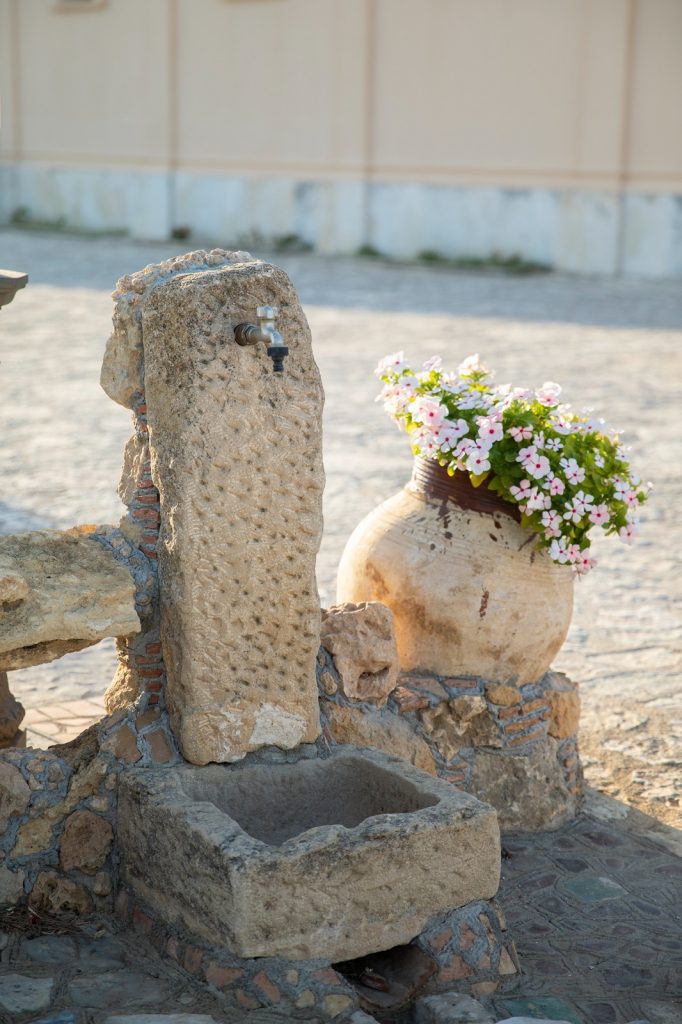Info Generiche
lat: 37°55’42.2″N
lng: 12°51’42.4″E
Itinerario Storia e Mito: 24°
Itinerario Religioso: 20°
A due chilometri circa da Calatafimi, sul versante settentrionale del colle Tre Croci, su la spianata a mezza costa del monte, dirimpetto alle rovine della antica Segesta, si erge il Santuario di Maria SS.ma di Giubino, residenza estiva della madonna, uno dei più noti santuari mariani della Sicilia, la cui fama è legata alla memoria del Beato Arcangelo Placenza da Calatafimi (nato nel 1380 e morto nel 1460) trascorse gli anni giovanile da eremita in una grotta del monte stesso. Entrato nel ordine dei frati e trasferitosi ad Alcamo sarebbe anche vissuto in una grotta, presso l’attuale chiesa di s. Maria di Gesù, ritenuto fondatore del convento. Il suo corpo si venera in un urna in vetro, situata sull’altare della suddetta chiesa.
Le origini di questo santuario sono antichissime, e qualche studioso moderno pensa di potere identificare il suo sito con quello di una antica fortezza chiamata “Calatagabuni”, di cui si hanno notizie a partire dalla seconda metà secolo XIV; mentre “i primi documenti dell’esistenza della chiesa li troviamo nell’anno 1495”.
La tradizione vuole che il trittico marmoreo (la cui Madonna, scolpita da ignoti e detta del “ Giubileo”, divenne poi di Giubino) era originariamente collocata in una chiesa nella contrada di “Angimbè”. La leggenda narra che un giorno alcuni contadini, mentre aravano la terra nel bosco di Angimbè, con grande sorpresa, trovarono la bella Madonna. L’avevano nascosta in quel luogo gli antichi cristiani quando gli eretici iconoclasti distruggevano le sacre immagini. La scoperta fece accorrere molta gente da Calatafimi e dalla vicina Alcamo. Ne nacque una contesa, che la Madonna stessa risolse. Messa la sacra Immagine sopra un carro di buoi, questi attraverso il bosco la portarono a Giubino, e là, sulla spianata, si inginocchiarono. La Madonna su quel poggio voleva la sua Chiesa, ed il popolo vi fabbricò il Santuario. Questa graziosa leggenda, piena di poesia, raccolta da storici e documenti ufficiali, si tramanda ancora raccontata dal popolo.
Grande è stata sempre la devozione che ha nutrito Calatafimi verso la Santissima Vergine divenuta “Patrona del paese” quando nel 1600 a causa di una invasione di cavallette che mise in ginocchio il paese il popolo ormai sconfortato ma pieno di fede rivolse un aiuto al Cielo. Sotto la pressione del momento non seppero decidere quale Santo invocare; il Signore stesso fece la sua scelta. Si decise di fare un bussolo. Per tre volte un bambino estrasse il nome della Madonna di Giubino fra l’incredulità dei presenti l’immagine della Madonna venne smurata e portata in processione verso il paese accompagnata dalle preghiere del popolo. Quando la Sacra Immagine toccò le mura della città si sentì levarsi nell’aria un gran movimento, un turbine di vento spazzò via le cavallette rendendo serena l’area circostante, il popolo allibito cantò inni di laude e ringraziamenti al suo Dio ed alla liberatrice Maria. Così Nostra Signora di Giubino divenne per sempre la Celeste Patrona e la divina Protettrice di Calatafimi. Il popolo ebbe fiducia in lei e la sua speranza non andò confusa. Da allora in città questa Sacra Icona è stata ospitata prima nella chiesa Madre e poi in quella del SS. Crocifisso, fino a quando nel 1907 l’ex chiesa del monastero di S. Caterina divenne il suo santuario di città. Fu in questo santuario che nel 1931 venne finalmente ricomposto e restaurato il trittico.
Ogni anno la seconda domenica di Luglio il simulacro di Maria SS.ma di Giubino viene condotto in processione nel suo antico santuario di campagna, dove resta fino alla terza Domenica di Settembre.
Il santuario comprende una piccola chiesa ed un eremitaggio ad essa attiguo, che “tranne lievi recenti modifiche, conservano ancora le antiche e primiere forme”. Semplice e quasi disadorna la chiesetta, con la porta principale a ponente, misura m 17,60 x 5,15. La cappella dell’unico altare ha solo qualche ornamento. Sull’altare, quando non è collocata l’icona marmorea originale, viene esposto un quadro di Maria SS. Di Giubino datato 1779. “Nel senso della lunghezza della chiesa, dal lato di settentrione, vi è un piccolo corridoio largo m.2,50, dal quale si accede a quattro piccole camerette a guisa di celle, per gli antichi eremiti”. Sotto il santuario c’è una piccola grotta, nella quale si tramanda che il Beato Arcangelo “passava le notti orando e flagellandosi”. Viva è ancora la memoria popolare di un antico cipresso, che fino al 1804 si ergeva vicino al santuario, su cui al Beato “compariva la Santissima Vergine con in braccio il suo diletto Infante”.
HOLY MARY OF GIUBINO SANCTUARY
descrizione:
Two kilometers from Calatafimi, on the northern slope of the Tre Croci hill, on the plain halfway up the mountain, opposite the ruins of the ancient Segesta, stands the Sanctuary of Holy Mary of Giubino, the summer residence of the Madonna, one of the most famous Marian shrines of Sicily, whose fame is linked to the memory of Blessed Arcangelo Placenza from Calatafimi (born in 1380 and died in 1460) spent his youthful years as a hermit in a cave of the mountain itself. Entered into the order of the friars and moved to Alcamo would also have lived in a cave, at the current church of s. Mary of Jesus, considered the founder of the convent. His body is venerated in a glass urn, located on the altar of the aforementioned church.
The origins of this sanctuary is very old, and some modern scholars think they can identify its site with that of an ancient fortress called “Calatagabuni”, of which we have news from the second half of the XIV century; while “the first documents of the existence of the church can be found back to the year 1495”.
Tradition tells that the marble triptych (whose Madonna, sculpted by unknowns and said of the “Jubilee”, later became by Giubino) was originally placed in a church in the district of “Angimbè”. Legend tells that one day some peasants, while they were digging up the land in the Angimbè wood, were surprised to find the beautiful Madonna. Ancient Christians had hidden it there when iconoclastic heretics destroyed sacred images. The discovery brought a lot of people from Calatafimi and from the nearby Alcamo. A dispute arose, which the Madonna herself resolved. Having placed the Holy Image on a cart of oxen, they carried it through the wood to Giubino, and there, on the esplanade, they knelt down. This was the sign that the Madonna on that hill wanted her Church, and the people made the Sanctuary there. This pretty legend, full of poetry, collected by historians and official documents, is still handed down and told by the people of Calatafimi.
Great has always been the devotion that has nourished Calatafimi towards the Most Holy Virgin who became “Patroness of the country” when in 1600 due to an invasion of locusts that brought the country to its knees, the people now disheartened but full of faith turned to Heaven. Under the pressure of the moment they could not decide which Saint to invoke; the Lord himself made his choice. It was decided to make a knock. Three times a child took the name of the Madonna di Giubino among the disbelief of those present, the image of the Madonna was smeared and carried in procession towards the village accompanied by the prayers of the people. When the Holy Image touched the walls of the city a great movement was heard in the air, a whirlwind swept away the grasshoppers making the surrounding area serene, the appalled people sang hymns of praise and thanks to his God and the liberator Maria . Thus Our Lady of Giubino became forever the Celestial Patroness and the divine Protector of Calatafimi. The people trusted her and her hope was not confused. Since then in the city this Sacred Icon has been hosted first in the Mother Church and then in that of the SS. Crucifix, until in 1907 the former church of St. Catherine’s monastery became its city sanctuary. It was in this sanctuary that in 1931 the triptych was finally recomposed and rest.
Every year on the second Sunday of July, the statue of Holy Mary of Giubino is carried in procession in her ancient country sanctuary, where she remains until the third Sunday of September.
The sanctuary includes a small church and a hermitage adjacent to it, which “except for minor recent changes, still retain the ancient and early forms”. The church is simple and almost unadorned, with the main door to the west, measuring 17.60 x 5.15 m. The chapel of the only altar has only a few ornaments. On the altar, when the original marble icon is not placed, a painting of Mary is exhibited. Giubino dated 1779. “In the sense of the length of the church, from the north side, there is a small corridor, 2.50 m wide, which leads to four small rooms in the guise of cells, for the ancient hermits”. Under the sanctuary there is a small cave, in which it is said that the Blessed Archangel “spent his nights praying and scourging”. Strong is still faith of the popular memory of an ancient cypress, which until 1804 stood near the sanctuary, where the Holy Mary appeared with his beloved Jesus in his arms to the Blessed Arcangelo.
SANTUARIO DE LA VILLE DE MARIA SANTISSIMA DE GIUBINO
Adjacent à l’ancien monastère bénédictin se trouve son église, qui a l’entrée principale de la via Mazzini et un secondaire sur la place Plebiscito.
Cette église est le sanctuaire de la ville de la Patronne de Calatafimi Maria Santissima di Giubino.
En 1655, l’invasion acridienne a été en train de détruire les cultures à travers le territoire de Calatafimi, les personnes se sont rassemblées dans l’Eglise Mère, et là, il a été décidé que, après avoir mis dans un’urne les noms de tous les saints qui avaient un autel dans les église le pays, le patron serait celui qui serait extrait; invoqué le Saint-Esprit, le billet a été écrit avec le nom de Maria SS.ma de Giubino. Ainsi, la partie centrale du triptyque avec l’image de la Vierge a été hâtivement retiré du mur où il était muré dans l’église pays de Giubino, et porté en procession. Par miracle, le territoire de Calatafimi était libre des sauterelles.
Cette église a été construite en 1721, sur la conception de l’architecte Giovanni Biagio Amico, pour en remplacer une autre de 1573, plus petite et correspondant au moins en partie à la sacristie actuelle. C’est une petite église, haute et mince, à une seule nef. Dans le vestibule, sur le mur de droite il y a une peinture il y a Notre-Dame des Anges et à ses pieds les saints Jean-Baptiste, Placido, Benedetto, Mauro et Catherine d’Alexandrie, sur le côté gauche de Santa Maria Maddalena. Continuant sur le côté droit de l’allée, San Benedetto sauve le petit Placido. Au-dessus de l’autel principal est exposée à adorer le triptyque de marbre de Maria Santissima di Giubino, patronne de Calatafimi. Au centre, la Vierge, sculptée en position assise, tient l’Enfant dans ses bras. À droite et à gauche San Michele Arcangelo et San Francesco. Le triptyque est posé sur une base décorée de trois bas-reliefs représentant San Michele Arcangelo avec un autre ange qui chassé les démons, à droite, le passage de la Sainte Vierge Marie au ciel, centre et à gauche Saint François recevant les stigmates avec les merveilles de Frère Leo, ils ferment les extrémités de deux boucliers croisés. Aux murs abside Sainte Marie de la Miséricorde, Saint-Benoît reçoit la musique de Totila, Alessandro Magno avec le Grand Prêtre, Esther et Assuérus. Sur le côté gauche de la nef: Mariage mystique de Sainte Catherine d’Alexandrie, Marie Très Sainte Assomption au Ciel.
Dans la sacristie: âmes pourpres. Dans les chambres adjacentes à la sacristie sont conservés les deux “Vare” pour le

